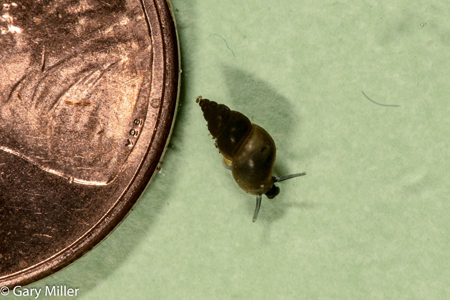
The New Zealand mud snail (NZMS, Potamopyrgus antipodarum) is one of the most wide-spread aquatic invasive species in the world and has invaded parts of Europe, Asia, Australia, North America, and South America. Though small in size, NZMS can reach high densities, impacting native aquatic communities and disrupting ecosystem processes. After being initially found in North America in the Snake River, Idaho in 1987, the first populations of NZMS in the Great Lakes region were discovered in Lake Ontario in 1991. Since then, they have been found in all other Great Lakes except Lake Huron. Recently, NZMS have been found in inland rivers and streams in the Great Lakes region, and their consequences to native species are yet to be known. The Great Lakes New Zealand Mud Snail Collaborative is a regional approach to NZMS management and includes the expertise of state, federal, academic, and non-profit institutions. The Collaborative strives to improve knowledge on the ecosystem impacts of NZMS, develop strategies to minimize their spread, inform management initiatives, and raise public awareness.
Explore this website to learn more!


